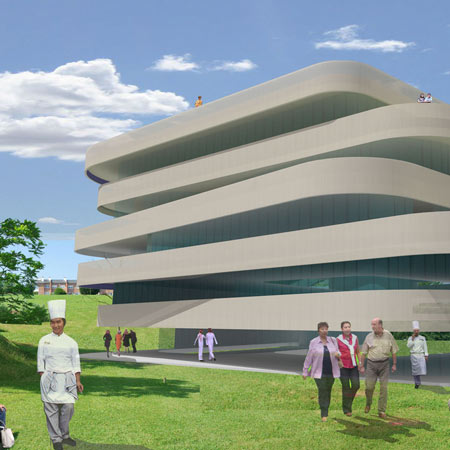
Basque Culinary Centre by Vaumm
Spanish architecture practice Vaumm have won a competition to design a culinary centre at Donostia-San Sebastián in the Basque region of Spain, with their design resembling a pile of stacked plates.
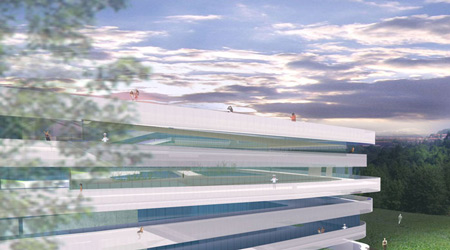
The Basque Culinary Centre will be a learning centre for gastronomic sciences.

Located on a slope, the layers of the building will follow the contours of the hill.
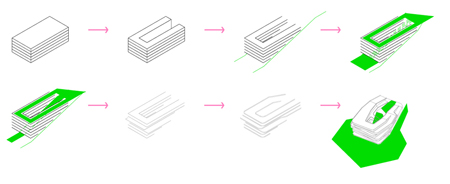
Here's some text from the Basque Culinary Centre:
--
Project competition with Jury Intervention for the Basic Project and Design technical assistant during the Constructive Project and construction Works for the Gastronomic Science University and Research & Innovation Centre for Gastronomic Science- BASQUE CULINARY CENTRE in Donostia-San Sebastián.

Record
In May 2009 Mondragon University (Mondragon Unibertsitatea) and Basque Chefs created the Basque Culinary Centre Foundation, with the support of the Public Institutions.
The centre will be located in San Sebastián, Gipuzkoa, Spain, and will become the head-office of the Gastronomic Science University and Innovation and Research centre in Gastronomic Sciences of Mondragon University, so that this building will be singular as the first building where the programme is brought together.
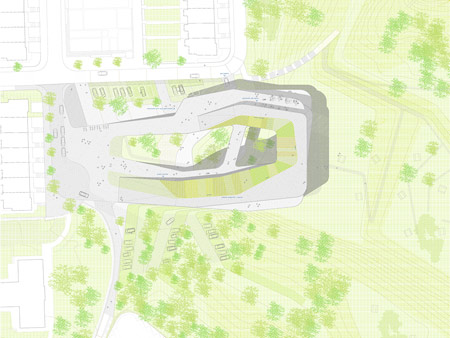
The Basque Culinary Centre has the aim of Professional Training, Research, Innovation and the transfer of knowledge of the different areas of the Gastronomic Sciences, generating research processes between Universities, Technological Centres, Companies and Public Institutions (Donostia- San Sebastián Townhall, Diputación Foral Gipuzkoa, Basque Government, Spanish Government through the Science and Innovation Ministry.
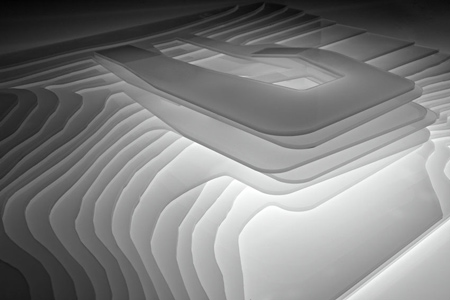
General aspects of the proposal
The new building that will house Basque Culinary Centres head-office is located in a tangential site to the Miramon Technological Business Park. This condition of proximity with the very steep slope of the site assumes the starting point of this architectonic proposal.
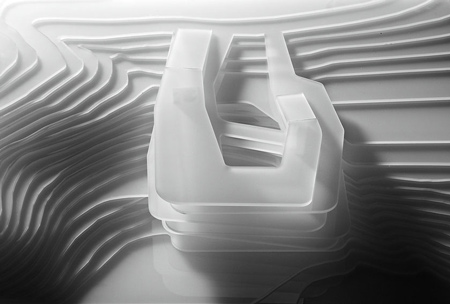
On the one hand, the building must become the icon of the Gastronomic Science University, showing towards the exterior an image based on technology and innovative leadership, but on the other hand, it must respect and interact with the scale of the low density quartier where it settles down. It is because of this dual condition that the building makes the most of the slope to organize the functional programme from the upperside to lowerside, locating the public areas on the access floor, allowing for the speciality of the programme while going down, while entering the building.
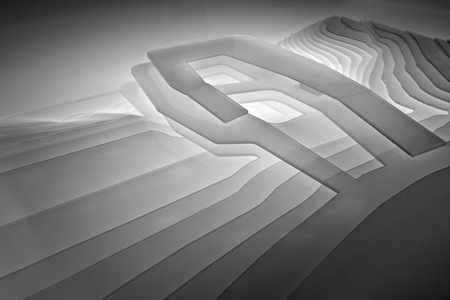
The volume takes a U-shape, through which on the way down the slope is allowed, without forgetting the fact that it gives shape to the interior spaces through which all of the circulation is developed. This way a space full of activity is configured, where all the relationships and interchanges take place as two determined elements for the innovation act.

From a functional point of view, it has to be mentioned that this diagram organizes the use of the programme in a summarized way, in three groups, one of them related to the Academic area and one another to the Practice area and the last one to the Research area. Vertically bringing together the way all the spaces relate to the Gastronomic Practice area, as the changing-rooms, ateliers, precooking kitchen, access to raw and other kitchens, we get the interconnection between them for people and food in a straight way.
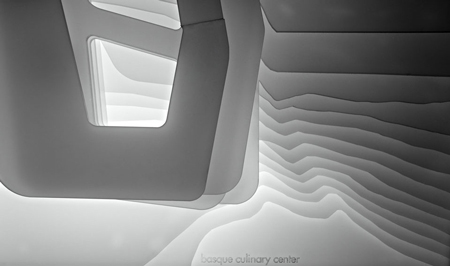
From a far distance the building shows the different levels that give shape to it, comparing its scale to the buildings of the Technological Business Park, while from a short distance the roof becomes an area used for cultivation of edible and aromatic plants, almost neutralizing the effect of the building towards the closest semi-detached housings.The building expresses itself the condition of the slope as an aspect drawn from the place emphasizing the character of support of the floor structure that are piled up as untidy dishes following the contour lines. As the floor structures are shown as activity supports, the dishes keep the iconographical value as the support of the work developed in the kitchen.
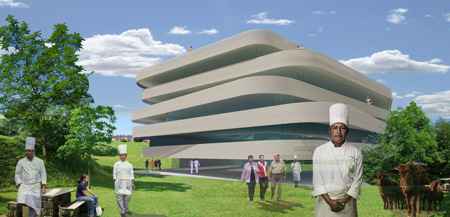
Volume generation
From a conceptual point of view, volume generation is based on the scale of work between the iconographical image (piled up dishes) and the building itself.
The artist Robert Therrien (Chicago 1947) handles daily kitchen objects such as dish services, pots, to uplift them into artistic objects, by means of accumulations, scale multiplications. The plane character of these objects has a contrast with their iconographical presence when they assume their new dimension.
The same strategy has been taken to the exterior volume definition of the building, where the Therrien’s dishes will function as daily support of the spaces related to the Technological development and innovation in Gastronomy. In this way we suggest the metaphor that joins Gastronomy and Architecture; the “dish that becomes again the support of the Gastronomy” and the “architectural floor structures that become again the support of the activity”.
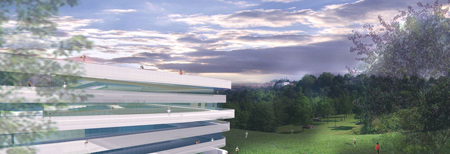
Architects:
Vaumm
Iñigo García Odiaga
Marta Álvarez Pastor
Jon Muniategiandikoetxea Markiegi
Javier Ubillos Pernaut
Tomás Valenciano Tamayo
Collaborators:
Laida Juanikorena Agirre, Architecture PFC student
Itziar Modrego Monforte, Architecture PFC student